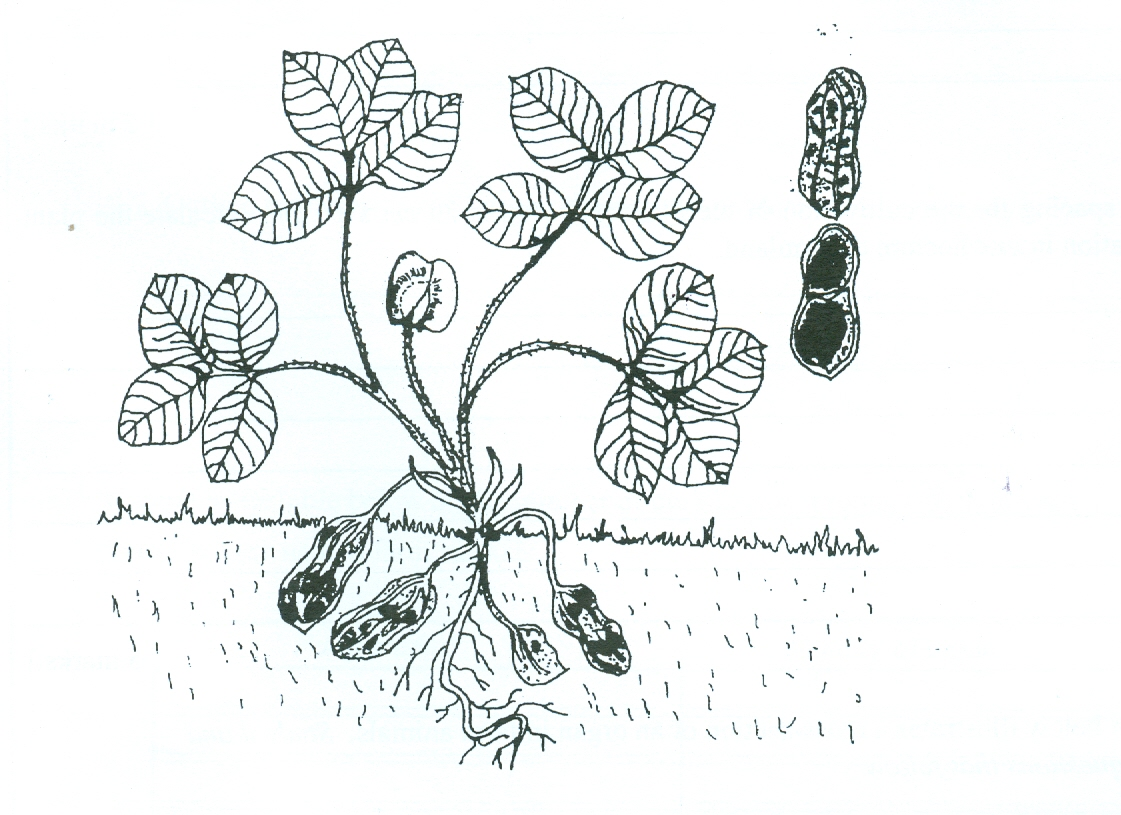Question 3
The diagram below illustrates a crop plant. Study it and answer the questions that follow.

(a) Name the illustrated crop. (1 mark)
(b) Mention the method of propagation of the illustrated crop. (1 mark)
(c) List two methods of harvesting the illustrated crop. (2 marks)
(d) Give four uses of the illustrated crop. (4 marks)
(e) Outline two steps involved in the processing of the illustrated crop after harvesting. (2 marks)
(f) If the spacing for the cultivation of the illustrated crop is 20 cm x 60 cm, calculate the
plant population in one hectare of farmland. (5 marks)
Observation
- Many candidates were unable to identify the groundnut plant with some of them writing groundnut as the illustrated crop.
- Many candidates only mentioned drying as a step in processing groundnut after harvesting and could not give the other steps involved.Furthermore, most candidates could not calculate the plant population of groundnut.
The expected answers include:
3. . (a) Name of illustrated crop
- Groundnut plant
(b) Method of propagation of illustrated crop
- By seed
(c) Methods of harvesting groundnut
- Manually by uprooting the plant
- Mechanically by using groundnut lifter
- Harvesting by means of hoes
(d) Uses of groundnut
- The shell/briquette serves as fuel
- The seeds are eaten as food
- Groundnut oil is extracted from the seeds which is used for cooking
- Groundnut oil is processed into margarine
- Groundnut cake is used as livestock feed
- The shelled pod and dried plants are fed to livestock as roughages
- Can be exported to other countries
(e) Steps involved in processing groundnut after harvesting
- Threshing - Shelling
- Winnowing - Drying
(f) Calculation on plant population of groundnut
Area of farmland = 1 hectare
Spacing for groundnut = 20 cm x 60 cm
= 0.2 m x 0.6 m
= 0.12 m2
1 hectare = 10, 000 m2
Plant population = Area of farmland
Spacing
= 10,000 m2
0.12 m2
= 83,333 plants
